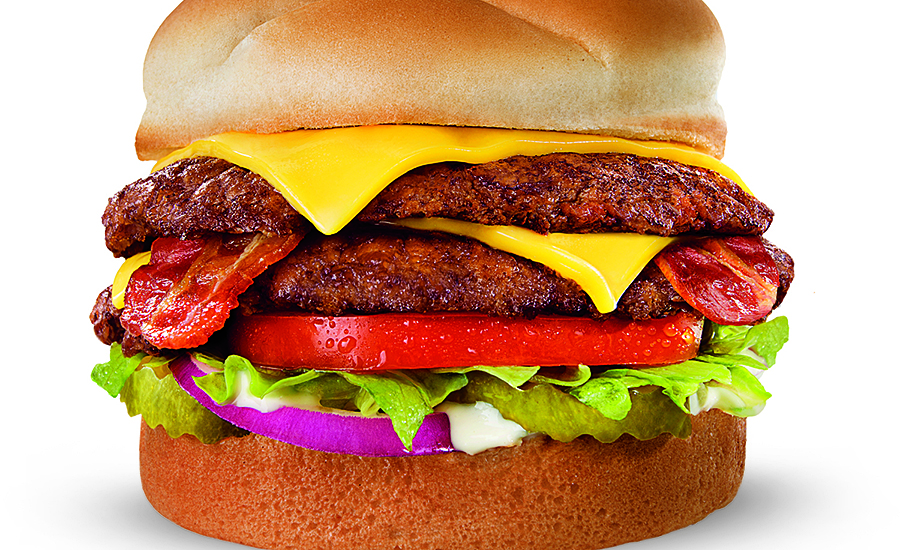The burger sector is turning into an increasingly complex and opportunistic protein market.
With merchandisers’ access to a rapidly expanding array of burger options encompassing a wide range of proteins and plant-based selections and more consumers revealing interest in newer burger alternatives, determining the optimal selections to offer at each location can be thorny.
Yet, the widespread popularity of burgers and potential for generating greater activity and revenues makes it vital for retailers and foodservice operators to have distinct and powerful programs.
Article Index:
“Burgers are universally loved,” reports Datassential, a Chicago-based market research firm, noting burgers are the 10th most loved food of the more than 3,000 items that it tracks and are in the top percentile for nearly every demographic segment.
In fact, 56 percent of consumers eat burgers at least once a week, according to Technomic, a Chicago-based food industry research and consulting firm.
Consumption is highest among consumers between the ages of 18 and 34 (62 percent), men (62 percent) and Southerners (60 percent), Technomic reports in its 2017 Burger Consumer Trend Report.
Helping to spur activity is ongoing innovation, with burgers incorporating a wider variety of ingredients, proteins and formations while becoming healthier, analysts say.
There is an increasing availability of boar, venison, turkey, chicken and salmon burgers, for instance, and such inclusions as veggies, cheeses, other proteins and herbs and spices, says Maeve Webster, president of Menu Matters, an Arlington, Vt.-based food industry research and consulting firm.
Groceries and foodservice outlets also are offering more burgers that do not originate from animals, she says. These offerings range from produce-based to cellular selections (see 'Alternatives become more mainstream' sidebar).
Fueling the expansion of burger varieties are younger consumers “who are open to a far wider array of flavors and ingredients and often looking for more interesting experiences from what would be considered the most basic burger options,” Webster says. “There also is a higher rate of vegetarianism and veganism in younger consumers and an overall movement toward eating more healthfully without necessarily making extreme changes to behavior.”
International flavor
Wichita, Kan.-based Cargill Protein — which develops burgers for the retail, foodservice and business-to-business channels — also reports demand for unique eating experiences is increasing, with consumers seeking customized burgers with novel flavors either from the burger itself or what they add to the burger.
Cargill Protein reports strong global flavor influences are resulting in the proliferation of Asian and Latin burgers and “next on the burger scene” are Filipino-inspired burgers, which feature such ingredients as longanisa (sweet sausage), banana ketchup, garlic, pork crackling, mango, pickled green papaya, sweet potato fries and pandesal bread.

“Young adult consumers are especially interested in global flavors and will look for restaurants that allow them to explore different cultures on their plates,” Cargill Protein reports.
Other increasingly prominent flavors and ingredients that “remind consumers of global adventures” include black garlic, gochujang, fire-roasted fruits such as peaches and pineapple, and fresh toppings like avocado and arugula, Cargill Protein reports, adding “there is a burger recipe for every price point, taste preference, and consumer demographic. Quality ingredients, freshness and layered textures are becoming more important to customers who want their burger their way.”
Cargill Protein is expanding its burger line with two mix-in patty flavors for the summer: bourbon barbecue cheddar and loaded Italian style, in addition to a new tri-tip patty and TGI Fridays-branded mushroom Swiss frozen patties.
In addition to responding to the greater shopper interest in flavor alternatives, more merchandisers are offering burgers with different grinds and patty formations to create points of differentiation within their outlets, says Jamie Schweid, president and chief executive officer of Schweid & Sons, a Carlstadt, N.J.-based ground beef purveyor that supplies Certified Angus Beef grinds.
The processor increasingly supports the incorporation in burgers of newer beef varieties, such as chuck brisket, short rib and Wagyu, for sales by supermarkets and restaurants, as well as grass-fed and natural options, he says, adding that evolving forming technologies also are creating different eating experiences. That includes the creation of patties with looser grinds and the expansion of infusion burgers with such elements as mushrooms, bacon and Swiss cheese, Schweid says.
“Consumers are looking for innovation and recipe ideas,” he says. “Many also want to spend less time on meal preparation so retailers are providing more value-added options, such as pre-made inclusion burgers.”
Quest for greater quality
The recession of 2008 led many price-conscious beef eaters to switch from steak to burgers, which was a key trigger for retailers and foodservice operators to offer more high quality and diverse selections, Schweid says. A large number of those consumers who began with commodity items are trading up to premium burgers, which remain affordable compared with steak and often are just two or three dollars more per pound than the commodity selections, he says.
“The beauty of the burger price point is that it transcends all shopper segments,” Schweid says. “Premium burgers skew a little more to the higher-end market segment, but there is not a tremendous cost associated with the premium burger space. Retailers are offering a much better-quality burger and not at a significantly higher cost.”
Alternatives become more mainstream
Burgers that eschew traditional meats are proliferating in both supermarkets and foodservice locations with the newer options including cellular and high-tech non-animal elements.
Among the more prominent suppliers is Redwood City, Calif.-based Impossible Foods, which is merchandising the Impossible Burger. The burger that contains plant-based ingredients is in more than 5,000 restaurants in the U.S., Hong Kong and Macau, the company says. The burger is scheduled to become available in supermarkets in 2019, the company adds.
The Impossible Burger, which launched in restaurants in 2016, is made mostly of wheat and potato proteins, coconut oil and heme — which the company says are the same breakdown of macro and micronutrients in meat from cows, and which cooks, smells and tastes like meat from cows.
In addition, El Segundo, Calif.-based Beyond Meat is merchandising its Beyond Burger, which uses peas (its primary source of protein) and beets to mimic the red appearance of beef, the supplier notes. Beyond Meat says that the burgers are available in more than 10,000 restaurants, hotels and universities “and beyond” and a variety of supermarket chains in the U.S.
Beyond Burger also is on the menus at TGI Fridays, BurgerFi, A&W, Organic Bareburger, Veggie Grill and Carl’s Jr. and there are plans to sell the selections in more than 50 countries, the supplier reports.
Such burgers are the first non-meat options “that are developed and marketed to a broad audience, well outside the more traditional Vegan and vegetarian niche,” says Maeve Webster, president of Menu Matters, an Arlington, Vt.-based food industry research and consulting firm. “These are a great example of how manufacturers are looking to replicate ‘true’ burger experiences while elevating the healthfulness and eliminating the need to consume animal protein to enjoy burgers.”
Along with specialty burgers, items like the Impossible Burger and the Beyond Burger are going mainstream “by appealing not just to vegans and vegetarians but to meat eaters as well,” says Charles Winship, senior research analyst at Technomic, a Chicago-based food industry research and consulting firm.
Also contributing to the launch of newer burger selections in grocery outlets is operators’ greater interest in attracting consumers who already order such items at restaurants, he says, noting the biggest risk for retailers is to not offer such innovative and premium items. Burgers with higher price points carry greater margins and can help create an overall sales lift for the entire meat case, he says.
“Groceries should want to be the first to market in their retail segment of premium options, as foodservice operators already are succeeding with the different burger offerings,” Schweid says. “The market for the products already exists, so the grocery operator’s decision should be relatively easy. If a grocery doesn’t market the premium items, somebody else is going to.”
Schweid & Sons research found it also is important to educate consumers on the availability and eating experiences from premium and ultra-premium burgers. Many shoppers want to learn why newer burger options are different, better and more flavorful than commodity items, Schweid says. He says such vehicles as in-store signage and butcher interactions with shoppers are effective communications methods.
The purveyor informs customers about its ground beef elements by listing the flavor and the degree of tenderness and marbling on its packaging, “to better enable shoppers to decide on the selection that is best for them,” he says.
Reducing risk
Offering a greater array of burger options also is important as more shoppers are willing to experiment with novel alternatives because of the “low trial barrier,” says Anne-Marie Roerink, principal of 210 Analytics, a San Antonio-based market research and marketing strategies firm.
“Because everyone knows how to cook burgers, whether the weapon of choice is the charcoal grill, stove or the George Foreman grill, there is wide potential consumer uptake,” she says. “Consumers want variety, including protein variety. While most won’t experiment with a roast or duck if they have never cooked those items before, a burger patty made from bison, lamb or turkey instead of beef requires the same preparation skill.”
Burger innovations make further sense, Roerink says, as the large base of Millennials who are more active burger purchasers than older consumer segments, such as Baby Boomers, seek newer selections and are in their prime spending years.
“The meat shopper is changing, so a lack of innovation results in the risk of losing business to another retailer or another source of protein,” she says.
Creating excitement around innovation “is always a winning strategy,” Roerink says. Retailers can generate greater interest in new burger options through in-store sampling, having identical selections available in the meat department and deli prepared case for additional exposure and including the burger as part of a larger meal offering.
“Routine is the biggest enemy, so we have to create awareness of these offerings in-store and beyond,” she says.
Health hindrances
Though marketing innovative burgers can create buzz and activity at the supermarket meat case and in foodservice outlets, merchandisers seeking to maximize revenues still face the burden of trying to sway the significant number of people who think burgers are bad for their health, analysts say.
Indeed, 40 percent of consumers indicate that burgers are unhealthy, reports Mintel Group, a Chicago-based global market research firm, in its April 2018 Burger Trends US report
“Regulations requiring the posting of nutrition information have likely exasperated the issue, especially with young adults who may indulge more frequently on burgers and are attracted to the affordability of limited service offerings,” Mintel says. “Menu development and product positioning should be mindful of nutritional basics that burgers can deliver on such elements as protein content.”
Despite such health concerns, 75 percent of consumers say they still view burgers as an occasional treat, but many favor options with higher-quality elements, Mintel reports. Among the 1,781 nationally representative adult respondents to a January 2018 online Mintel burger survey, 67 percent indicated they would be willing to pay more for selections with premium ingredients, and 56 percent of consumers say they prefer “classic” burgers without too many toppings, “suggesting that ‘premium ingredients’ is likely tied to the burger itself,” Mintel notes.

While eating healthy is important, taste still trumps attributes in burgers, Cargill Protein reports, adding that many consumers who associate fresh ground beef with being more premium and better tasting eschew frozen burgers.
“Consumers also are increasingly interested in burgers made from newer or unique cuts of beef,” Cargill Protein says. “Brisket is one of the fastest growing burger proteins and we have seen ribeye patties perform exceptionally well on menus.”
Burgers made from a combination of ground beef and a non-animal ingredient, such as a vegetable or grain, is becoming more appealing.
“There is a small, but growing, segment of consumers who consider themselves flexitarian and these consumers have a desire to reduce the amount of animal protein they consume, but do consume some animal protein as part of their diets,” Cargill Protein reports. “Blended burgers made from both animal protein and non-animal ingredients offer this group of consumers the best of both worlds.”
Attract the right shoppers
With more consumers embracing proteins in their quest for healthier lifestyles, while cutting back on red meat consumption, interest in plant-based burgers and other beef alternatives will likely continue to grow, Mintel says. This can make forward-thinking menu development a boon for foodservice operators (see sidebar).
“Alternatives geared for consumers who are leaning into these consumption trends will not only open the door to a broader group of diners, allowing them to indulge on their terms, but to also do so more frequently,” Mintel says.
Burger merchandisers, meanwhile, can still generate more interest in ground beef selections by promoting fresh options that create a perception of quality, Mintel reports, adding that in addition to using such claims as “fresh,” “never frozen beef,” “house made” and “local,” offering a custom blend of beef cuts conjures premium associations that appeal to a wide array of consumers.
Premium blends are among the fastest growing category within the fresh-patty segment, Cargill Protein reports. Such products include brisket, short rib and chuck, while value-oriented items may feature a blend of ground beef and pork.
Sourcing also is becoming more important as additional wellness-oriented shoppers want to know the origin of their burgers, Cargill Protein reports. Many people also want the ability to customize burgers so they can accommodate everyone in their household. In response, the supplier says it plans to include printed copy on its packs of seasoned patties currently under development, with the messaging containing such suggestions as “great with beer-braised onions, smoked cheddar and stone-ground mustard spread.”
Bigger bucks from burgers
Along with the incorporation of higher-end elements, the quality and types of ingredients in burgers, particularly on restaurant menus, are becoming more upscale, which is resulting in higher prices to consumers, says Charles Winship, Technomic senior research analyst.
“Toppings like avocado, brisket and fried eggs have elevated burgers, and this has been reflected in prices,” he says. “Over the past five years, the average burger price at the top 500 restaurant chains has increased faster than the average entrée price, driven primarily by specialty burgers.”
The popularity of burgers is leading to the launch of even more options as merchandisers focus on creating unique offerings in an attempt to grab the spotlight in a crowded marketplace, he says.
“The limited-service restaurant burger category does over $80 billion in sales, and burgers are also a key item at plenty of full-service restaurants,” Winship says. “This level of supply has encouraged operators to innovate their offerings in order to stand out.”
In addition, wellness and sustainability concerns are triggering further innovations at foodservice, with operators seeking to develop new varieties of veggie burgers to enhance the worth and broaden the appeal of non-meat options, he says.
“Consumers prioritize the quality and taste of the patty when ordering burgers from restaurants, so that should be central to the selling story,” Winship says. “But toppings also are becoming more important and can serve as additional points of differentiation.”
Restaurants, however, need to be cautious when developing selections because in a tight labor market, it can be difficult to find workers who are able to efficiently prepare and serve burgers that are unduly complex, he says.
“While consumers will say they want a variety of options to choose from, they’ll also be upset with slow service or inaccurate orders, so operators have to strike a balance between what consumers want and what is operationally feasible,” Winship says.
Change remains constant
Nevertheless, the burger segment remains one of the prime areas of transformation for both restaurants and groceries, Roerink says.
She notes more “better burger” restaurant concepts are emerging as is the number of restaurants featuring burgers with productions claims such as “grass fed” and “antibiotic free.”
Additionally, Roerink says portions are changing along with protein types, grades of meat and flavors.
“Many grocery stores and foodservice operators are experimenting with additional ingredients such as bacon, blue cheese, peppers, onions, meatloaf and more,” she says. “That integration also includes the blending of plant-based ingredients with beef, such as with mushroom burgers. It is a way to provide a bridge to shoppers in meeting their wants in protein variety, health, fun and flavor, while still keeping meat on the plate.”
Foodservice operators and supermarkets also are evaluating the potential merchandising of burgers that consist of such alternate animal proteins as lamb, bison and elk, Roerink says, adding that burgers with prime meat are becoming more prominent because of the heavier shopper focus on quality and having a superior eating experience.
Many consumers, she notes, are seeking such proteins for at-home burger preparation in order to avoid the “much more expensive eating out occasion for the same eating experience.”
With burgers evolving at restaurants and grocery stores, consumers’ exposure to new alternatives is occurring “everywhere they go, which will also aid their uptake,” Roerink says. NP
Adventures in burger-eating
By Richard Mitchell, contributing writer
The evolution of the burger is increasingly evident at foodservice locations.
The availability of plant-based burgers in restaurants is up 190 percent over the past year and selections are now available on 1 percent of total restaurant menus, reports Datassential, a Chicago-based market research firm.
In addition, more foodservice outlets are offering burgers topped with different proteins, and brunch and breakfast burgers also are becoming more prominent, Datassential says.
“Burgers are a safe platform that allow operators a lot of room for experimentation,” Datassential notes. “Typically, if you want to introduce a new flavor profile, burgers will be a good way to do it as people find them approachable. And anything that seems too adventurous can always be left on the side.”
Because diners often perceive burgers to be a less expensive menu offering, many are willing to risk buying unfamiliar selections rather than a higher priced entrée, Datassential reports.
The most prominent of the newer options, meanwhile, lean toward containing extreme or healthy attributes, Datassential reports, noting that the availability of macaroni and cheese burgers, for instance, is up 319 percent over the past four years and found on 1 percent of burger menus.
Egg burgers and the breakfast and brunch burger concepts also are becoming more popular.
Over-easy egg burgers, for instance, are on 1 percent of burger menus, a 266 percent increase over the past four years, Datassential says.
Breakfast burgers are on 2 percent of burger menus, a 152 percent gain over the last four years; sunny-side egg burgers are on 2 percent of burger menus, up 97 percent during the period; and hash brown is on nearly 2 percent of burger menus, a 128 percent increase over the past four years.
Change is in the air
In addition to the burger itself, unconventional accoutrements are increasingly popular, says Maeve Webster, president of Menu Matters, an Arlington, Vt.-based food industry research and consulting firm.
Such elements include the use of flatbreads, including naan and pita, in lieu of traditional rolls; hummus, pesto and tahini as condiments; and burger toppings that include different types of produce and other meats and cheeses, she says.
Many spreads also are on the rise, including peanut butter, pimiento cheese and hummus, Datassential notes.
“We are seeing plant-based burgers growing, but not just name brands like the Beyond Burger and the Impossible Burger, but also beets and quinoa as patty components,” Datassential reports. “Things like brisket and short rib are also growing both as toppers to burger patties and as call-outs for the meat of the patty itself.”
Restaurant operators, meanwhile, face little risk in including novel offerings as they expand the number of burger selections on their menus, “unless that expansion is at the expense of more traditional or mainstream options,” says Anne-Marie Roerink, principal of 210 Analytics, a San Antonio-based market research and marketing consulting firm. “You don’t want to eliminate those entirely or leave consumers who are looking for traditional options with what they would perceive as lesser options” in terms of value, quality and size.
Including different types and flavors of burgers on menus “only creates a more inclusive burger program,” Roerink says, noting burgers continue to appeal to all demographics. While younger people have the most interest in newer flavors, older consumers are also open to a wider variety of alternatives, she says.
“It’s the burger flavor profile or type that will impact the demographics,” Webster says.
A surge in sales
The availability of different options also is contributing to greater overall burger revenues, with sales at the top 500 limited service restaurants up by an estimated 3 percent in 2018, reports Technomic, a Chicago-based food industry research and consulting firm.
Burgers represent 9 percent of all entrees in the top 500 restaurant chains, with the number of veggie burgers at those outlets increasing 5.8 percent over the last year, Technomic says.
Among establishments, 68 percent of burger consumers say they occasionally buy burgers from fast-food restaurants, greater than any other restaurant segment. Yet, more consumers younger than 35 indicate they typically order burgers from fast-casual restaurants, family-style restaurants and fine-dining restaurants, Technomic reports.
Forty-one percent of consumers, especially women, say they purchase burgers over other items due to a craving, Technomic says. Men more often cite portion size as a key purchase driver.
Yet, while having large and diverse selections of burgers can be a major consumer magnet, restaurant operators with a strong and active burger program also can unknowingly be limiting their revenue streams, Datassential reports.
“A good burger can be a major draw,” Datassential notes. “The risk is that if your burger is a strong offering it can be a concern as it tends to be a lower-cost offering. Operators with the draw of a burger will want to make sure beverage, side and dessert offerings can aid in check averages.”





Report Abusive Comment